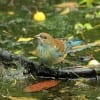 by Jim Stevenson,
by Jim Stevenson,
Hi folks, If anyone is interested in our four upcoming trips and hasn’t contacted me yet, please do so immediately! That’s Florida (Jan. 7-17), Rio Grande Valley (Jan. 24-27), Costa Rica (Feb. 3-13) and Venezuela in late February. This article is on some land birds seen recently, either migrating or wintering. Enjoy!
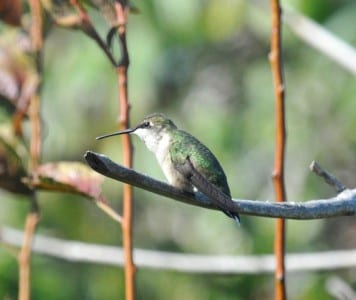
There are over 300 species of hummingbirds in the New World, mostly in South America. We have 14-15 in North America, with only one – this Ruby-throated – normally in the East. Males are easy but females are told by the short, straight bill and green top. It is a fortunatething that western hummers visit the East (occasionally) in the winter, when virtually all ruby-throats are in the Tropics.
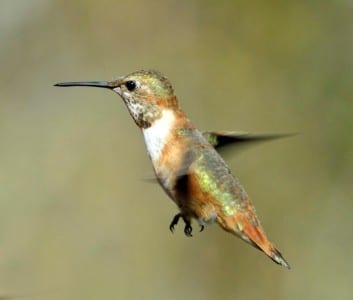
Historically, the “other” species of hummer which occasionally headed east was the Rufous, this one being a young male. This species is quite aggressive at feeders and many folks kinda wish theirs would go away! Rufous can be nearly identical to the Allen’s of the Far West, and really, nearly every species of western hummer has shown up somewhere back East since folks started putting up feeders.
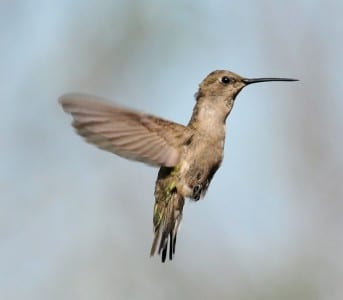
Another hummer we are getting more and more east of their historical range is the Black-chinned. They have a longer and more decurved bill than the ruby-throat, and are grayer on the top*. They are extremely closely-related to ruby-throats and since most that venture east are females and immatures, they are often tough to detect. *It is interesting how in pairs of bird species, when one is western and the other is eastern, the eastern species is often more brightly colored than their western counterpart.
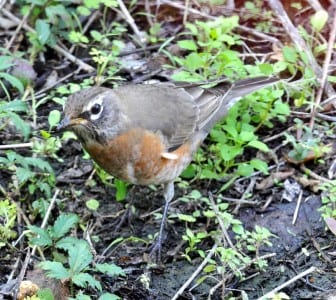
Robins are classic examples of augmentation, when a species is found breeding in the South in low numbers but winter birds down from the North increase their numbers here in Dixie by a huge factor. Curiously, like with waxwings, they are nomadic, appearing in some places in huge numbers certain winters but not others. Robins are thrushes, of course, but in the Old World, a robin is a type of flycatcher!
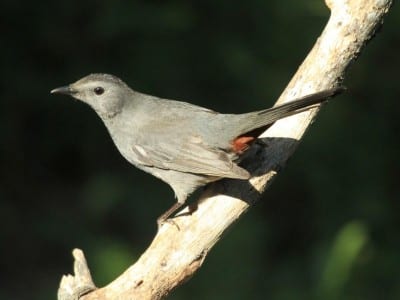
Catbirds are mimic thrushes, along with mockingbirds and thrashers, but they do very little recognizable mimicking. Their status is even more complicated than robins, as they are scarce breeders in the South, extremely abundant migrants spring and fall, but then very scarce winter residents. Indeed, the status for many birds is complicated and full of exceptions – even year to year.
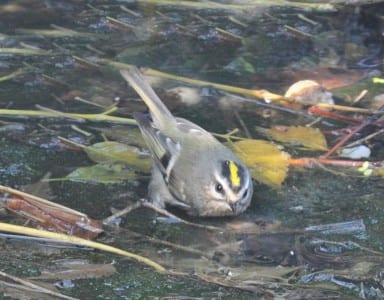
Curiously, some species have invasion years where they become very common in the South in winter after several years of being scarce or absent. The Golden-crowned Kinglet is one such bird, and this year they may be around all winter. Note the “golden” stripe down the crown and the dark “whisker” on the chin. Kinglets, like the ubiquitous ruby-crowned, are an Old World group which includes birds called “firecrests.”
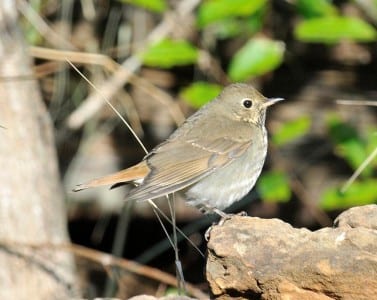
Most of ourthrushes are spring-fall migrants but this Hermit Thrush winters in the southern US. Note how gray it is: This is one from the Interior West, not the common one from the East that’s so prevalent in the South. This species is secretive, issuing a quiet “chuck” in the dense woods while flicking its (reddish) tail up. Up North, this species nests in lower altitudes, while cousins like the gray-cheeked are found up on mountains.
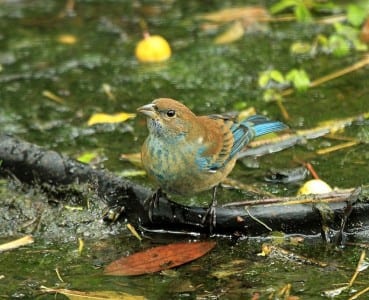
In fall, male Indigo Buntings lose much of their blue but retain some throughout the winter (especially on wings and tail). As a group, buntings are summer residents in the US, heading for Central America and the West Indies in fall. Buntings are brightly colored finches, often with some blue. There are also rather unrelated species like the Snow Bunting without blue, but they arose in the Old World.
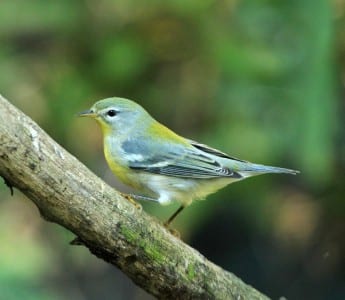
Some warblers winter in small numbers in the Deep South, with the vast majority of their kind heading to the Tropics in October. This is the Northern Parula, a bird of the Deep South’s vast swamps. Let me teach you something very cool about them: In spring, they are quite common in late March and early April, then there is a hiatus for about ten days, before they are again seen passing through into earlyMay. Why isthere that gap in mid-April? If you look at their map in the field guide, you’ll see they nest mostly in the Deep South and also Southern Canada. The early migrants nest in the Deep South and the late migrants nest in Canada. But the absence of nesting parulas in the areas in-between cause them to not be seen in the migration (much) in mid-April. Isn’t that cool?
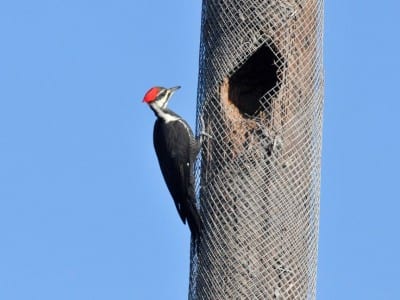
Pileated Woodpeckers are powerful birds, as evidenced by this one tearing through the wire mesh on the telephone pole and building its nest. There are several large, black woodpeckers in the Tropics as well, although, in my opinion, our ivory-billed is now extinct. Pileateds are actually fairly common in many places and don’t seem to mind populated areas, unlike their larger cousin who had no tolerance for people.
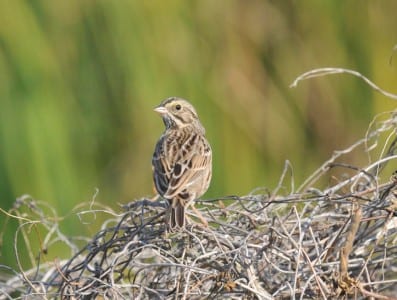
Savannah Sparrows are probably seen more than all other sparrows put together. They live in pastures and fields and are very conspicuous. They are streaked underneath and have no white outer tail feathers nor bold markings on the head. OK, they are boring. There is some variation in this species from very pale individuals to ones even darker than this example.
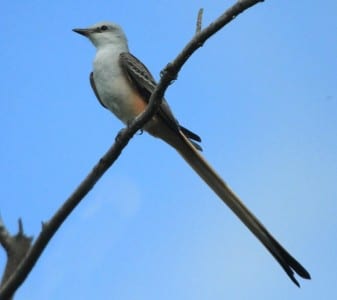
Scissor-tailed Flycatchers have a unique breeding range, nesting primarily in North Texas and Oklahoma. They have wandered considerably, and have turned up in most states in the country, many with breeding records! They are often in association with Western Kingbirds, and in Southern Mexico, with Fork-tailed Flycatchers. Adult males have the longer tails, and they reach their longest in late fall, just before they molt.
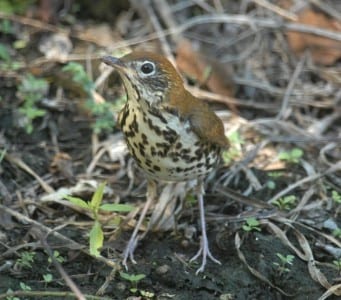
Wood Thrushes are pretty birds but their songs are the most beautiful of all North American songsters. They are eastern birds of heavy forests and have suffered from forest fragmentation. Their rich color on top and bold chest spots identify them to species but their flute-like songs could melt even the hardest heart.
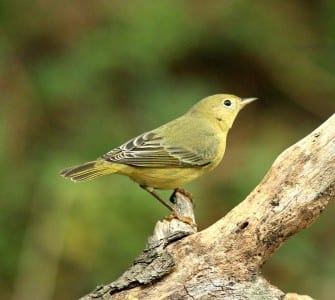
Yellow Warblers are widespread breeders and migrants in the US, passing through the Gulf States from early August to November. They have no real markings but a bright chip often betrays their presence in tall canopies. This species also has races in the Tropics with either garnet caps or entirely garnet heads. Curiously, while they are mostly early fall migrants, they are quite late in spring. One of their races, the Mangrove Warbler, may be spreading up the Texas Coast as mangrove trees colonize further north.

 Posted in
Posted in 
























